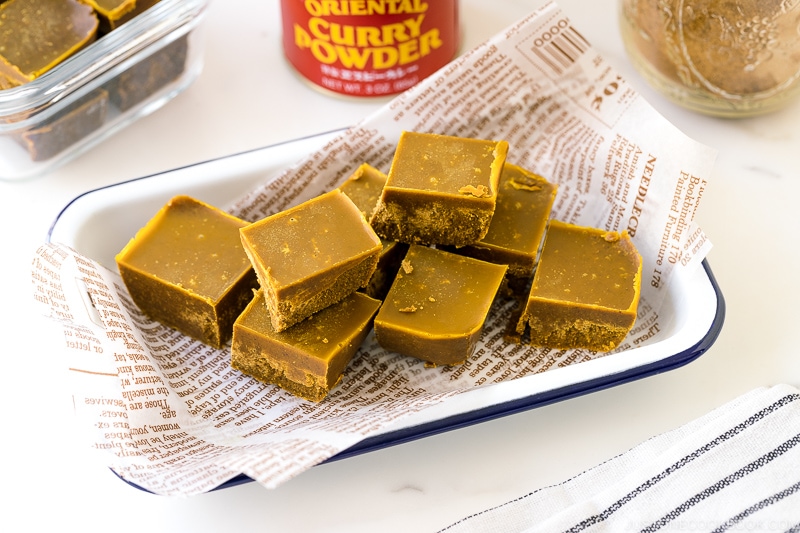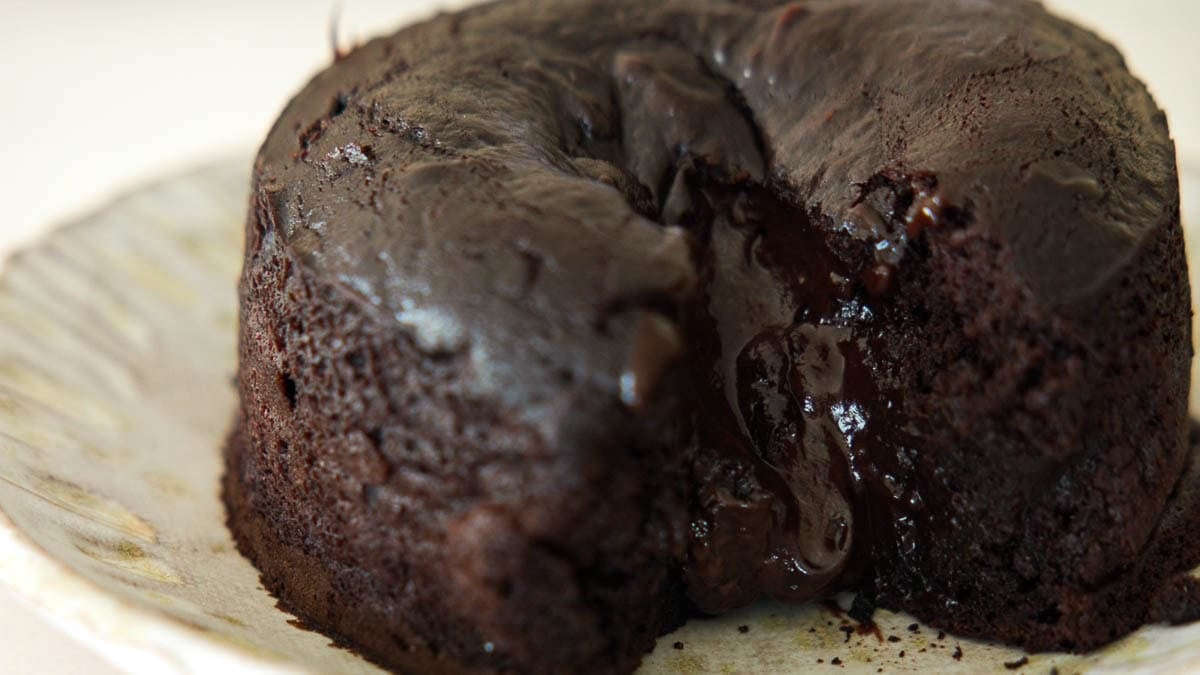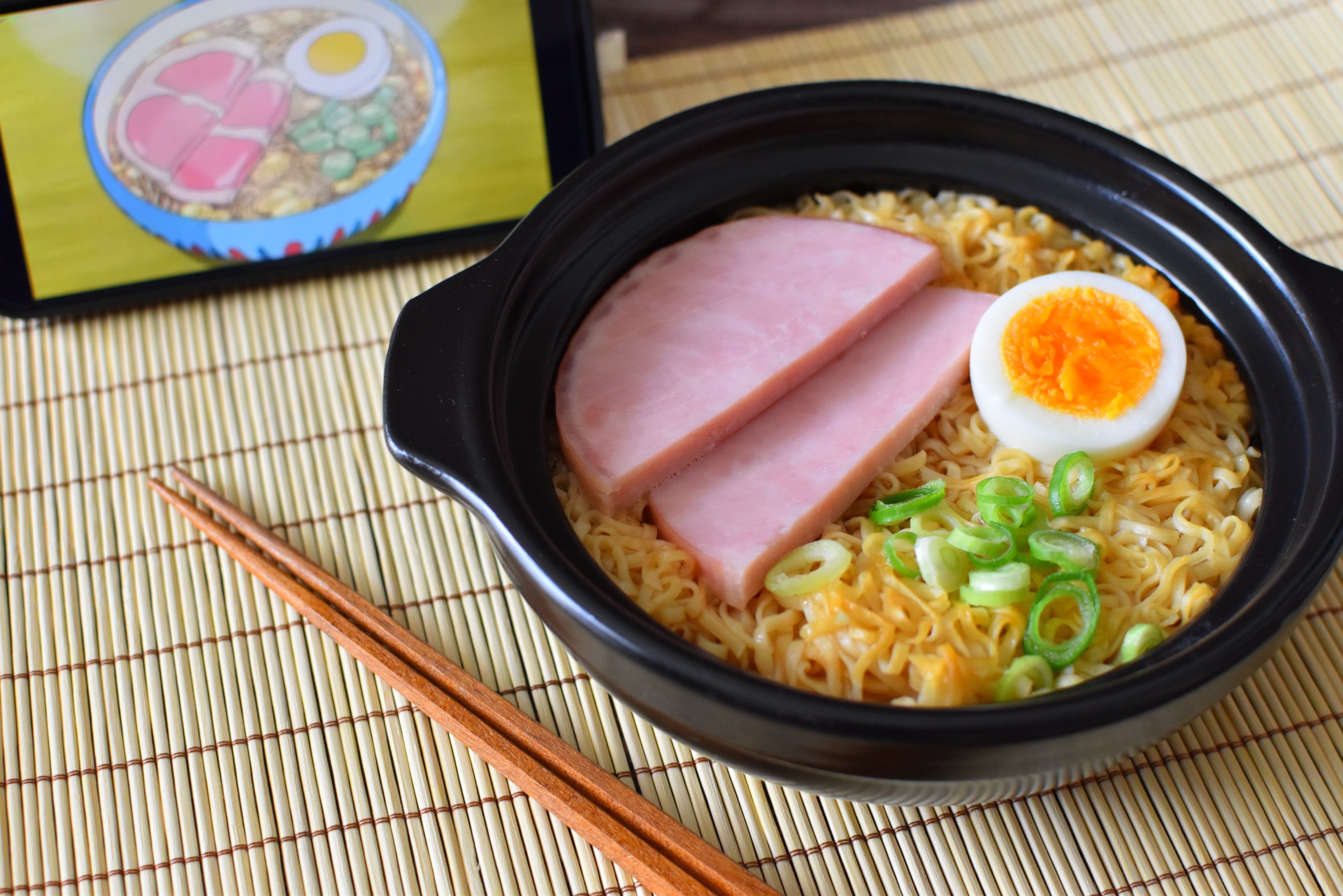Japanese corn potage is a classic homemade comfort soup! It’s the perfect example of yōshoku cuisine combining the creamy richness of Western-style soup with the natural sweetness of corn. It’s a familiar favorite in school lunches, family meals, and even as a warm drink from vending machines and convenience stores (konbini). You can make it easily at home using consommé or tamanegi koji (fermented onion koji) instead for a natural umami flavor.

What is Japanese Corn Potage?
Corn potage is a simple yet delicious Japanese corn soup inspired by French-style potage. It has a smooth, velvety texture and a naturally sweet corn flavor. Unlike chunky Western corn chowders, Japanese corn potage is usually pureed to a silky consistency and lightly seasoned for a more delicate taste. Milk and cream are also usually added to give it a comforting creaminess. This classic soup is commonly served in school lunches, at home as a side dish, and even sold warm in vending machines and convenience stores during the colder months.
Ingredients Overview
Japanese corn potage is made with simple, wholesome ingredients that come together to create a creamy and flavorful soup.

Sweet Corn
this is the key ingredient, its natural sweetness is what makes the soup so comforting and flavorful. In Japan, sweet corn is in season from June to August, making summer the best time to enjoy it when it’s most fresh and crisp. Fresh and whole corn cobs are best for making the soup for maximum flavor and texture but if it’s not available then frozen sweet corn will be the next best option.
Milk and Cream
Whole milk is the base liquid for Japanese corn potage to create a rich, smooth, and light texture. Plant-based milk like soy milk, oat milk, or coconut milk can also be substituted for a dairy-free/vegan-friendly soup but the flavour won’t be the same.
Cream is often added at the end of cooking to enrich the flavor and make the potage thicker, silkier, and creamier. Heavy cream (or fresh cream in Japan) is typically used, but you can adjust the amount depending on your tastes. Cream can also be used as a garnish by drizzling just a little on top before serving.
Onion Koji
This is a natural seasoning made by fermenting chopped onions with rice koji and salt. It develops deep umami, sweetness, and complexity, much like a concentrated soup stock, but without the need for animal-based consommé. It also already contains salt so it helps reduce the need for extra seasoning. Alternatively, you can use chicken stock, vegetable stock, or consommé (this will be the best flavor match).
Flour
A bit of flour is added to the soup to give it a thicker texture
Making Japanese corn potage at home is simple and doesn’t require any fancy equipment—just a few basic kitchen tools:
- Large pot or saucepan: a pot or saucepan is needed to sauté the ingredients and simmer the soup.
- Blender or immersion (hand) blender: to achieve the signature smooth and creamy texture of corn potage, you’ll need to blend the soup. A stand blender gives the smoothest results, but an immersion (hand) blender works just as well with less cleanup.
- Strainer (optional): if you prefer an ultra-silky smooth textured soup like the kind served in cafés or restaurants, you can pass the blended soup through a fine mesh sieve or strainer to remove any fibrous bits of corn.
Step-by-Step Recipe Instructions
1. Prep Corn
Cut kernels from fresh corn cobs. Break the cobs in half and simmer in 250 ml water and 1 cup of milk for 10 minutes to make a quick corn stock. Discard the cobs.

2. Cook Corn Kernels
- Melt butter in a pan and add most of the corn (save a small handful for texture later – optional) to cook for about 5 minutes.

- Stir in flour and cook for 1–2 min to remove raw taste, do not brown (Roux method).

3. Add Liquid
Pour in the corn-cob stock made in step 1. Bring to a gentle simmer; cook about 5 min.

4. Add Onion Koji or Consommé
Stir in onion koji or consommé. Warm gently 3–5 min—avoid boiling to prevent curdling.

5. Blend
Blend until very smooth with an immersion blender (or in batches in a stand blender). For ultra-silky smooth texture, pass through a fine mesh sieve while pressing with a ladle/spatula.

6. Adjust thickness
- Too thick: add a splash of milk/stock.
- Too thin: simmer briefly to reduce or stir in a slurry (1 tsp cornstarch + 1 tbsp cold milk), simmer 1 min.
Stir in the reserved kernels now for a bit of texture, if you like.
7. Season
Add salt and white pepper.
8. Finish
Stir in cream (if using). Reheat gently to serving temperature—do not boil.
9. Serve
Ladle into bowls. Top with croutons, parsley, black pepper, and/or a drizzle of cream.

- Use sweet corn for best flavor : sweet corn is the best for making the creamy and naturally sweet flavor of Japanese corn potage
- Use fresh corn : fresh whole sweet corn is best but if it’s not accessible or in season then frozen is suitable
- Don’t skip the blending step : blending makes the soup a silky and comforting potage. For an ultra-smooth texture, strain the soup after blending.
- Taste and adjust seasoning after adding milk : milk can soften the flavor, so be sure to re-season with salt and pepper after adding it.
Storage and Reheating Tips
Japanese corn potage can be stored in the refrigerator for 2–3 days in an airtight container. For longer storage, you can freeze the soup—just make sure to blend it before freezing for the best texture. Pour into freezer-safe containers or portion it into small servings for easy reheating. When you’re ready to eat it again, reheat gently on the stovetop over low heat, stirring occasionally, or warm it in the microwave in short bursts, stirring in between. Avoid boiling, as this can affect the creaminess and flavor.
How to Serve Corn Potage
- As an appetiser: Corn potage is best served hot as an appetiser along with crusty bread, buttery croutons, or even a small bowl of steamed rice for a Japanese-style twist.
- For kids lunches: it’s a great option for a kid’s lunch, thanks to its mild, naturally sweet flavor and creamy texture.
- As a side dish: serve it as a side dish alongside Western-style meals like teriyaki chicken, miso glazed salmon, tamago sando, katsu sando or ebi katsu sando.

Variations and Add-ins
Japanese corn potage is easy to customize to suit your taste or dietary needs.
For a vegan version: simply use plant-based milk (like soy, oat, coconut, or almond) and replace butter with a neutral oil such as olive or sunflower.
To make the soup heartier: try adding a cubed small potato during the simmering step—this adds natural thickness and a creamy texture without extra cream.
Chilled corn soup: sweet corn is usually in season in summer which makes it the most fresh, crispy, and naturally sweet at this time. But summer isn’t ideal for a warm and comforting soup so instead you can enjoy it chilled! Just leave it in the fridge to cool down before eating.
Extra garnishes and seasoning: a sprinkle of fresh parsley, a crack of black pepper, some crispy bacon bits, or a drizzle of cream or olive oil can be added to elevate the flavor and presentation. You can also add miso for a Japanese touch of extra umami.
Creamy and comforting Japanese corn potage soup made with sweet corn and milk. Easy to make, kid-friendly, and perfect for a cosy meal or appetiser.
Prep Time 10 minutes
Cook Time 20 minutes
Total Time 30 minutes
Servings: 4
2 large pots
1 strainer
1 blender
- ▢ 2 ears sweet corn
- ▢ 1 cup whole milk *1
- ▢ 1 cup water
- ▢ 1 tbsp flour
- ▢ 2 tbsp onion koji *2
- ▢ ½ tsp salt
- ▢ ¼ cup heavy cream
Peel the corn and cut the kernels off the cob with a knife.
Break the cob in half and place it in a pot with milk and water.
Simmer for about 10 minutes to make a simple corn stock.
Melt butter in a pan and add most of the corn (reserve a small handful for texture later-optional) to cook for about 5 minutes.
Stir in flour and cook 1–2 min to remove raw taste, do not brown(Roux method).
Pour in the corn-cob stock made in step 1 through a sieve.
Bring to a gentle simmer, cook for about 5 min.
Stir in the onion koji (or consomme) and salt to taste.
Blend until very smooth with an immersion blender (or in batches in a stand blender).
Pass through a fine sieve, pressing with a ladle/spatula – optional.
Stir in cream and reheat gently to serving temperature—do not boil.
Ladle into bowls. Top with croutons, parsley, black pepper, and/or a drizzle of cream.
*1 1 cup = 250ml, for vegan options, see the above post.
*2 2 tbsp onion koji is equivalent to 1 cube of consommé.
Calories: 133kcal · Carbohydrates: 13g · Protein: 4g · Fat: 8g · Saturated Fat: 5g · Polyunsaturated Fat: 1g · Monounsaturated Fat: 2g · Trans Fat: 0.003g · Cholesterol: 24mg · Sodium: 328mg · Potassium: 229mg · Fiber: 1g · Sugar: 6g · Vitamin A: 402IU · Vitamin C: 3mg · Calcium: 88mg · Iron: 0.3mg
Course: Appetiser, Side Dish
Cuisine: Europian/Japanese
I want to see it! Tag @chopstickchronicles on social media!
The site and our mobile application may contain links to affiliate websites. We receive a small affiliate commission for any purchase made by you on the affiliate website using such links. Read our disclosure policy.











 English (US) ·
English (US) ·